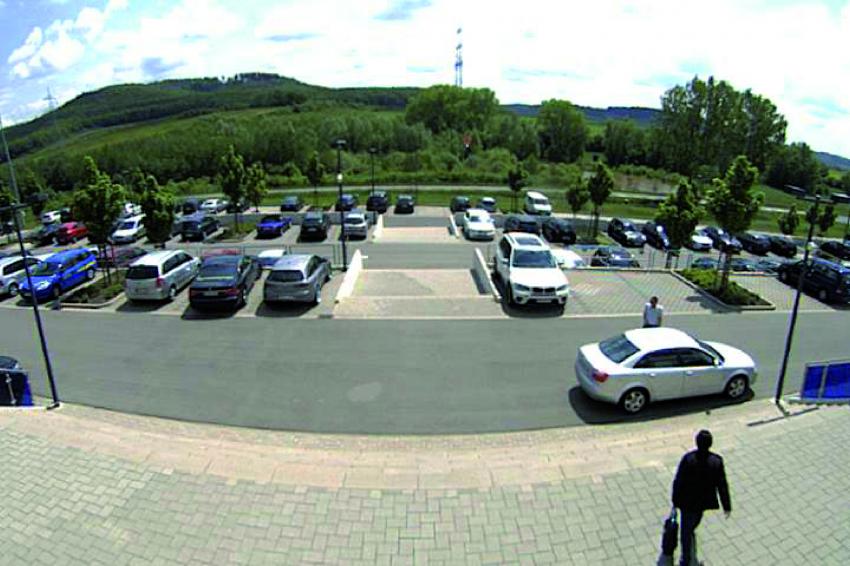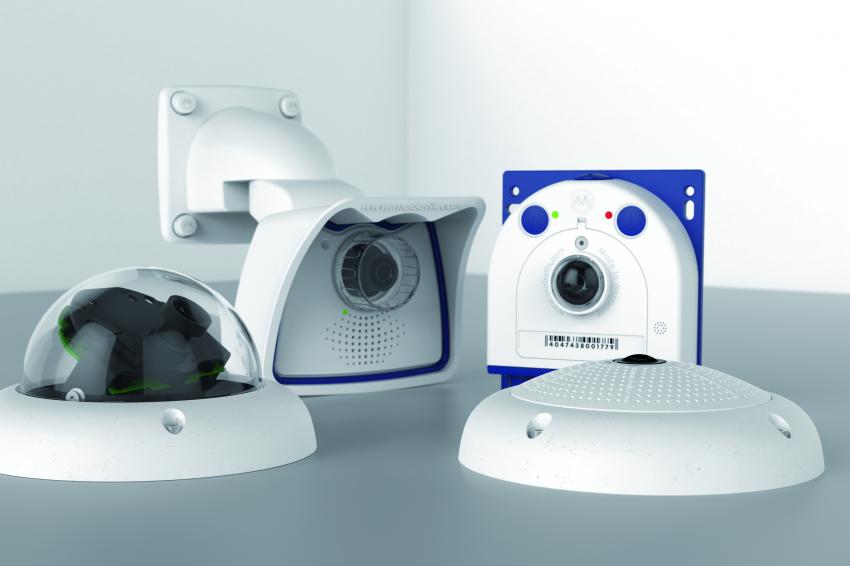Mobotix comes up with a Fresh Strategic Approach
Fit for the Future
Mobotix recently decided on a number of measures to restructure the company’s operative units and its organization. On the occasion of the disclosure of inside information, Mobotix informed the financial community about its new “Fit for the future” program. GIT SECURITY spoke to CEO Thomas Lausten.
GIT SECURITY: Mr. Lausten, you’ve been the new Chief Executive Officer of Mobotix since June 15th, one of the most important players in the field of video surveillance and security. How do you feel about your first few months in Langmeil?
Thomas Lausten: It has been an extremely interesting time for me from the start. I not only met our employees in our Langmeil headquarters. As you know, we have about 400 colleagues and partners globally working for Mobotix – including the Americas, the Middle East and Australia. I have just completed a world tour visiting our partners. This experience gave me a deeper understanding of this company. Everyone I met provided me with a tremendous amount of input and knowledge – and what struck me most, is the passion of the people working for our Company and with our solutions. I find this very inspiring and encouraging.
You successfully worked for Milestone Systems before you joined Mobotix. What was it that made you become interested in your new position?
Thomas Lausten: Well, the many years I worked for Milestone had quite naturally brought me into contact with the video technology community. And I must say that Mobotix’ approach has always stood out by doing things differently in this market, which has always fascinated me. So my decision was based on Mobotix’ attraction rather than an urge to leave Milestone.
Could you expand a bit more on what made Mobotix so impressive for you? And what does this mean for you in your role as a CEO?
Thomas Lausten: Mobotix looks upon the video market in a different way. We don`t see ourselves as a classic manufacturer of cameras. Cameras are rather seen in terms of the internet of things idea (IOT), that is, as a computer with a lens, working intelligently and with embedded storage capacities. As you know, we have been experiencing some difficulties recently – we just had to issue a profit alert. For me, this means that we have to tell our story better. The Company is, however, in a financially healthy situation, we have very good people and we have all the means necessary to overcome this situation. We have just compiled a new strategic plan to make Mobotix fit for the future.
What does this strategy look like?
Thomas Lausten: Our strategy consists of a number of key elements: First of all, we don’t see ourselves as a classic camera manufacturer. Instead we distinctly characterize Mobotix as a pioneering global Company that is developing solutions locally in a particular and generic German way. We want to focus on this more because the German way of engineering and approaching things is appreciated as being particularly innovative and of high quality. Mobotix and its employees have internalized this German way of doing things in an exemplary way and it opens up many opportunities in a changing market.
In what way?
Thomas Lausten: For instance, cyber security has become a concern changing the market’s approach to video technology. But the market often doesn’t see clearly enough that Mobotix is very capable of providing solutions, one of the reasons being that we are too technically focused. To make our customers understand this better we will do more translation work and tell the story more clearly. And another important conclusion we draw from a changing market: We have decided to open up, as many in the market are less and less inclined to accept a strictly proprietary concept. Our strategy change from a closed Mobotix product universe to opening up our systems enables us to enter new markets. Our partners can react more flexibly to specific needs and cover a wider range of projects with our systems. They were only used in so-called ‘green field’ projects until now; new installations or for the renewal of video systems. It wasn’t always possible to use our cameras within video management system from other suppliers or some existing systems, for example. We now include the H.264/ONVIF industry standard in our products so they can fulfil customer requirements that far exceed our previous project specifications.
…which is a clear change in Mobotix’ long standing strategy…?
Thomas Lausten: Yes, and we’re approaching this industry standard from two sides: on the one side we have the cameras that as from now on can ‘speak’ H.264 which makes it really easy to include our cameras in third party video management systems. On the other side we have the MxManagementCenter, a license-free and free-of-charge video management system that in the future will also be compatible with H.264 so that cameras from other manufacturers can be simply integrated in the MxManagementCenter. But we will definitely remain true to our own developments, such as the MxPEG Video Codec for example that was specially developed for security applications and has enormous advantages.
We want to increase the intelligence in the camera, meaning our decentralized concept, and to implement even more functionality directly into the camera. We now have a complete processor core available for this. Future software updates will enable it to perform totally new functions, such as recognizing license plates, faces or voices. There are many more ways in which we can use this resource. The additional processing power will mainly be used for the implementation of added value and additional services.
This is all part of our new strategy that we call “Fit for the future”. We are in close contact with many technology partners and important players. We will now move forward by opening up for integration with key manufacturers, embraced by all our global partners. We will reevaluate a number of functions in our organization, and improve our customer orientation. Also we will focus our technical development more clearly on what we are good at. This will also mean that we will concentrate on certain vertical markets. One of the most important effects of this is that we will empower our people more. This means a certain change from a management point of view: The more we want to grow on a global scale, the more important it will be to listen to and trust our employees. Many very brainy people work for us – I don’t know of a single IT-company relying on just a few clever people. One empowerment strategy we are following is to model our way of working on that of a start-up IT-company. We want to spread this spirit among our employees on a global scale.
On one occasion you characterized the market as being “aggressive”. In what way? And what does that mean for your own Company?
Thomas Lausten: The video market has indeed some aggressive and disruptive tendencies. I believe we should concentrate on the positive and even fascinating aspects this has for us. Cyber security is one of the many new trends that open up new possibilities. Where are it’s pictures going? Who has access to them? Mobotix cameras are very well prepared in this respect. We see many institutions replacing their products – and particularly trusting in products that are constructed under German laws. This makes us very confident, and it is a confirmation of our long term strategy.
What are the decision criteria for choosing a video system these days?
Thomas Lausten: The frame rate or definition of a camera are no longer vital decision criteria because today we have sufficient data available for standard image evaluation. An even higher frame rate often just drives the data rate up that has to be securely transmitted by the network or other infrastructure. So it becomes ever more important to pre-filter the data in the camera and let it be evaluated there. The software in the camera therefore has a much higher priority. At the same time, aspects such as data security and encryption methods become ever more important to encrypt the transmitted data as securely as possible. And this in turn demands more processor time in the camera. Cyber security is based on quality – and it is a key driver for customer’s decisions worldwide. Therefore it will play an important role in telling the Mobotix story. This increasing importance of cyber security issues is a great chance – we will not only be impacted by this trend, we will actively put it on our agenda. We have to be aware that companies had to shut down their production lines because of cyber-attacks, which are an increasing threat.
But you don’t believe that opening up jeopardizes the goal of ensuring cyber security?
Thomas Lausten: Our development concentrates on cyber security – using German standards. Products that follow this philosophy already have built-in cyber security, as it were. Cyber security is also a matter of choosing the right and reliable partners, in order to meet all the demands of the customer. And opening up our proprietary technology towards other companies’ systems doesn’t mean that there aren’t any boundaries necessary. Our proprietary software and chips remain important – they are of fundamental importance for secure and reliable systems. This is, after all, the great heritage of Ralf Hinkel and his ideas.
Konica Minolta is the majority shareholder of Mobotix while openness and standardization are a part of your strategic product development and at the same time an inherent part of the ‘Workplace of the Future’ of Konica Minolta. Exactly how is Mobotix integrated in this concept?
Thomas Lausten: The subject of ’Workplace of the Future‘ involves a lot more than just the integration of cameras. As well as video systems with cameras, the concept includes a door station with an Mx display and modules such as an Mx keypad. It’s all about how our current products with their analytical capabilities, such as object or people counting for example, can be used to automate the processes in offices. For example, when a visitor arrives at the reception area, an employee can be informed to go and collect them. Konica Minolta owns 65% of Mobotix’ shares and this gives us fantastic new opportunities. A long term perspective and further developments are enabled for us in this constellation. We are still working independently – and we have already started to realize many of our new ideas.
Thank you for your time and this insight into the Mobotix strategy.











